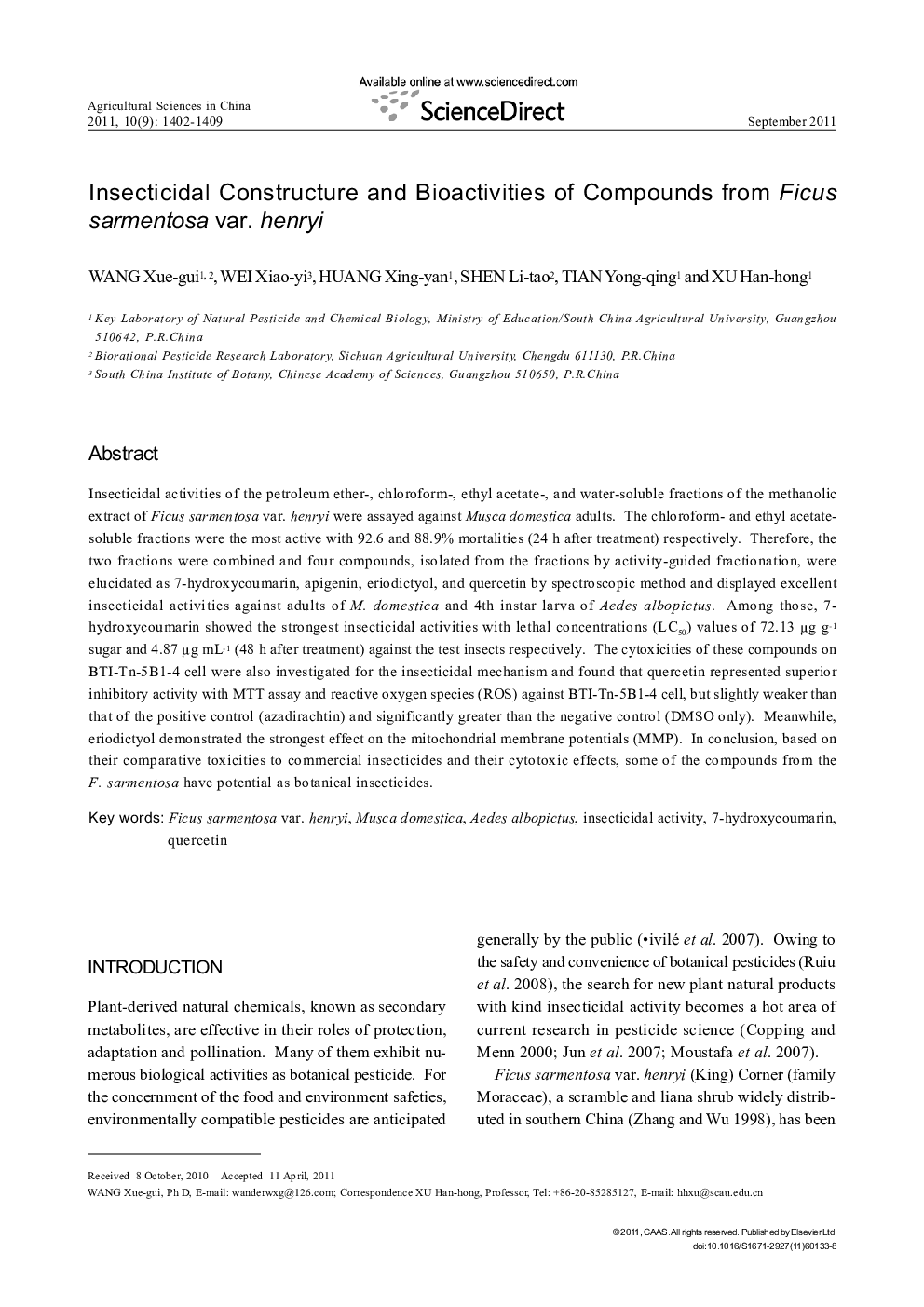| Article ID | Journal | Published Year | Pages | File Type |
|---|---|---|---|---|
| 4489845 | Agricultural Sciences in China | 2011 | 8 Pages |
Insecticidal activities of the petroleum ether-, chloroform-, ethyl acetate-, and water-soluble fractions of the methanolic extract of Ficus sarmentosa var. henryi were assayed against Musca domestica adults. The chloroform- and ethyl acetate-soluble fractions were the most active with 92.6 and 88.9% mortalities (24 h after treatment) respectively. Therefore, the two fractions were combined and four compounds, isolated from the fractions by activity-guided fractionation, were elucidated as 7-hydroxycoumarin, apigenin, eriodictyol, and quercetin by spectroscopic method and displayed excellent insecticidal activities against adults of M. domestica and 4th instar larva of Aedes albopictus. Among those, 7-hydroxycoumarin showed the strongest insecticidal activities with lethal concentrations (LC50) values of 72.13 μg g−1 sugar and 4.87 μg mL−1 (48 h after treatment) against the test insects respectively. The cytoxicities of these compounds on BTI-Tn-5Bl-4 cell were also investigated for the insecticidal mechanism and found that quercetin represented superior inhibitory activity with MTT assay and reactive oxygen species (ROS) against BTI-Tn-5Bl-4 cell, but slightly weaker than that of the positive control (azadirachtin) and significantly greater than the negative control (DMSO only). Meanwhile, eriodictyol demonstrated the strongest effect on the mitochondrial membrane potentials (MMP). In conclusion, based on their comparative toxicities to commercial insecticides and their cytotoxic effects, some of the compounds from the F. sarmentosa have potential as botanical insecticides.
